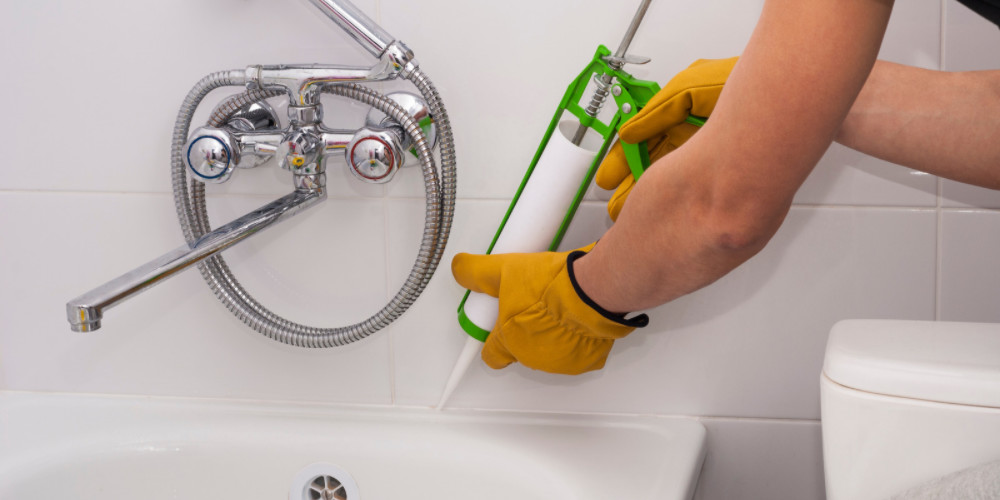Silicone: which one to choose? User guide and application types
With the right
professional silicone you can
seal, glue and protect not only the windows of the house, but also bathroom fixtures and other elements in the bathroom, glass and floors.
The range of silicones for sale online on
Windowo is very large and you will certainly be able to find the most suitable product for your specific sealing needs.
Siliconing shower cubicles , air conditioning systems, windows or windows will no longer be a problem. Read on to learn more.
 Silicones and sealants
Silicones and sealants are indispensable in various situations. Simple to apply both by professionals and in simple DIY, silicone is available in many types.
But what
types of silicone do you need? Let's see together how to apply it on any kind of surface.
What is silicone?
According to the definition,
silicones (or polysiloxanes) are polymeric materials composed of inorganic molecules created from chains of oxygen and silicon. They are used in professional sectors such as cosmetics, industry and obviously in the construction field.
The purpose of silicone is to
seal and bond to prevent the passage of air or fluids from the treated surfaces.
Silicone is a tool used in various applications since its commercial launch in the early 1900s, a few years before the Second World War. This is why it is part of every craftsman's toolbox.
How is silicone used?
As we have already seen, the
versatility of silicone is its main strength. The range of silicones is vast and suitable for different needs.
The
domestic uses of silicones are the most diverse:
- block the passage of drafts and humidity from the cracks of the windows or gutters;
- seal sanitary ware such as bathtubs, showers or sinks;
- glue tiles and kitchen shelves;
- repairing water leaks in general.
Among other "special uses", we can emphasize the existence of specific:
- anti-mold silicones for sanitary ware and air conditioning systems;
- silicones for glass and non-porous surfaces such as ceramics and metals;
- wood silicones ideal for filling cracks and crevices in parquet.
Neutral, acetic or acrylic - choose the best silicone
Not all silicones are created equal. So
which silicone is better to use? The suitable silicone must be chosen according to the surface you intend to treat.
The
most commonly used silicone sealants are neutral and acetic. To these we also add the type of acrylic silicones. Let's go and see them in more detail below.
Neutral silicone
Neutral silicones are perfect for
sealing windows , construction in general and metal carpentry. They do not give off bad odors during crosslinking and guarantee good adhesion on most porous and non-porous surfaces.
The
elasticity of a professional neutral silicone avoids detachment in the construction elements, also allowing an adequate
thermal seal.
In the Windowo online store you can find different types of neutral silicone on sale, choosing from
many shades of color .
Acetic silicone
Ideal for home DIY,
acetic silicones are
very versatile and often cheaper than other types of silicone. They can be used both in the bathroom and in the kitchen. Recommended for bonding showers and sealing bathtubs.
Acrylic silicone
Acrylic sealants are ideal for sealing porous surfaces. An acrylic silicone is particularly recommended in the case of building materials inserted in floors or terraces. Their main advantage is that they are
paintable with paints and varnishes (once dry).
Silicone: main features
Let's see in detail the advantages of the fundamental properties of a professional silicone.
Properties of silicone
The properties of a silicone are three:
- versatility : silicones have many different applications on multiple surfaces;
- resistance to atmospheric agents and inalterability with respect to them;
- ease of use : silicones can be used both by specialized workers and for small jobs.
How is silicone used?
The first thing to do is to
clean the surface to be treated : in order to apply the silicone correctly, dust and any debris must be removed. Obviously, if present, traces of old silicones placed previously must also be eliminated.
Then the tip of the cartridge is cut and the
nozzle is screwed onto it. We recommend that you use
professional silicone guns to carry out these operations. These tools allow to give the right pressure on the tube and allow an optimal and uniform distribution.
Once finished, the excess silicone must be removed from hands and tools. To do this you can use special
silicone cleaning wipes .
Finally you will have to wait for the work to dry and check that everything has been done correctly.